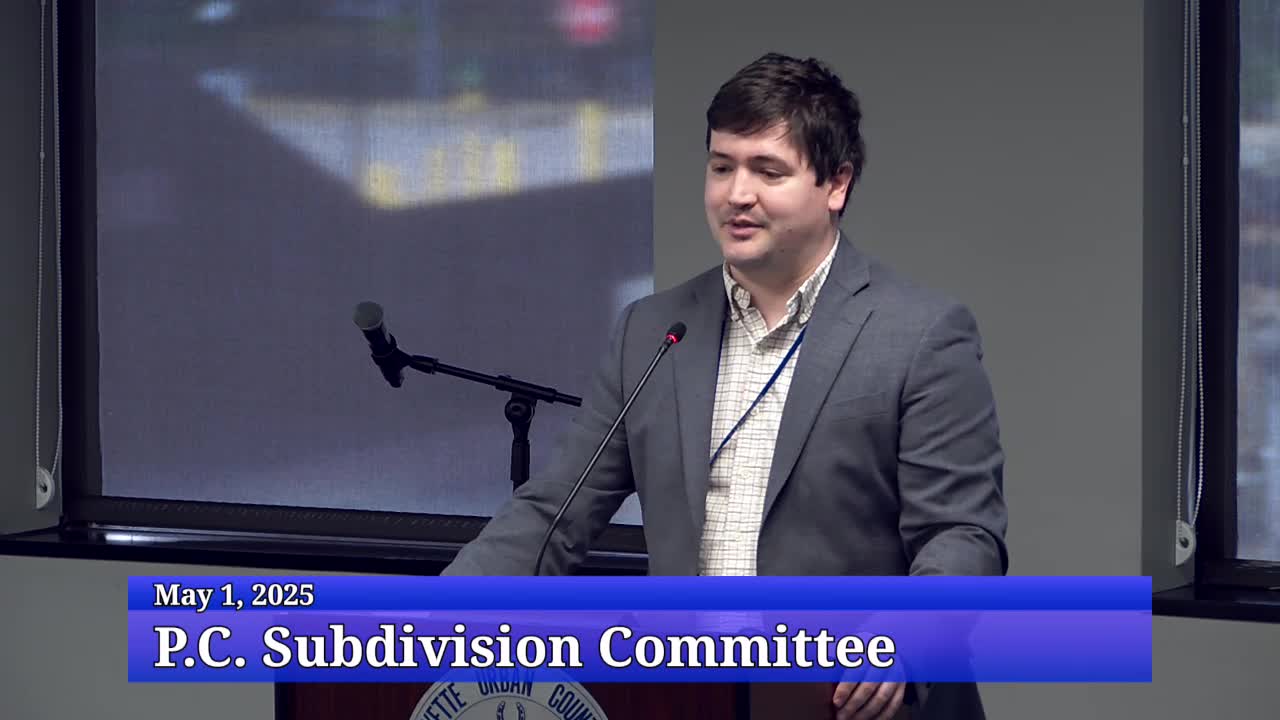Staff proposes alternative to 30% lot‑coverage rule in B‑3 zones to link building size to vehicular use area and create a waiver pathway
May 01, 2025 | Lexington City, Fayette County, Kentucky
This article was created by AI summarizing key points discussed. AI makes mistakes, so for full details and context, please refer to the video of the full meeting. Please report any errors so we can fix them. Report an error »

Planning staff briefed the Subdivision Committee and provided a status update on a zoning text amendment aimed at the minimum lot coverage requirement in the B‑3 commercial zoning district.
The prior rule required a building footprint equal to 30% of the parcel area, a standard staff and applicants found difficult to reconcile on small outparcels and for drive‑through or smaller commercial uses. Daniel Kron, standing in for staff, described a staff alternative that would link required building size to the amount of vehicular use area (parking, drive aisles and drive‑through lanes) rather than to total lot area. Under the proposed alternative, the required building footprint would be a proportion of the vehicular use area; applicants would also have an avenue to apply for a waiver under the city’s updated zoning procedures (House Bill 443 waivable standards).
Staff said this approach removes lot size as a penalty variable, preserves the goal of avoiding large expanses of impervious parking and drive aisles, and gives applicants flexibility on lot configuration. The alternative is waivable, staff said, whereas the original numeric lot coverage standard was not. Daniel Kron said staff would present more detailed analysis and comparisons at the end of the month and that the draft is intended to create a practical “release valve” for atypical lots while maintaining the ordinance’s intent to reduce oversized pavement areas and promote efficient corridor development.
Why it matters: changing how lot coverage is calculated could affect many future commercial developments on B‑3 corridors — particularly outparcels and small retail pads — and influence parking, landscaping and pedestrian design.
What’s next: staff will return with a full presentation and recommended draft language for Planning Commission consideration later in the month.
The prior rule required a building footprint equal to 30% of the parcel area, a standard staff and applicants found difficult to reconcile on small outparcels and for drive‑through or smaller commercial uses. Daniel Kron, standing in for staff, described a staff alternative that would link required building size to the amount of vehicular use area (parking, drive aisles and drive‑through lanes) rather than to total lot area. Under the proposed alternative, the required building footprint would be a proportion of the vehicular use area; applicants would also have an avenue to apply for a waiver under the city’s updated zoning procedures (House Bill 443 waivable standards).
Staff said this approach removes lot size as a penalty variable, preserves the goal of avoiding large expanses of impervious parking and drive aisles, and gives applicants flexibility on lot configuration. The alternative is waivable, staff said, whereas the original numeric lot coverage standard was not. Daniel Kron said staff would present more detailed analysis and comparisons at the end of the month and that the draft is intended to create a practical “release valve” for atypical lots while maintaining the ordinance’s intent to reduce oversized pavement areas and promote efficient corridor development.
Why it matters: changing how lot coverage is calculated could affect many future commercial developments on B‑3 corridors — particularly outparcels and small retail pads — and influence parking, landscaping and pedestrian design.
What’s next: staff will return with a full presentation and recommended draft language for Planning Commission consideration later in the month.
View full meeting
This article is based on a recent meeting—watch the full video and explore the complete transcript for deeper insights into the discussion.
View full meeting
